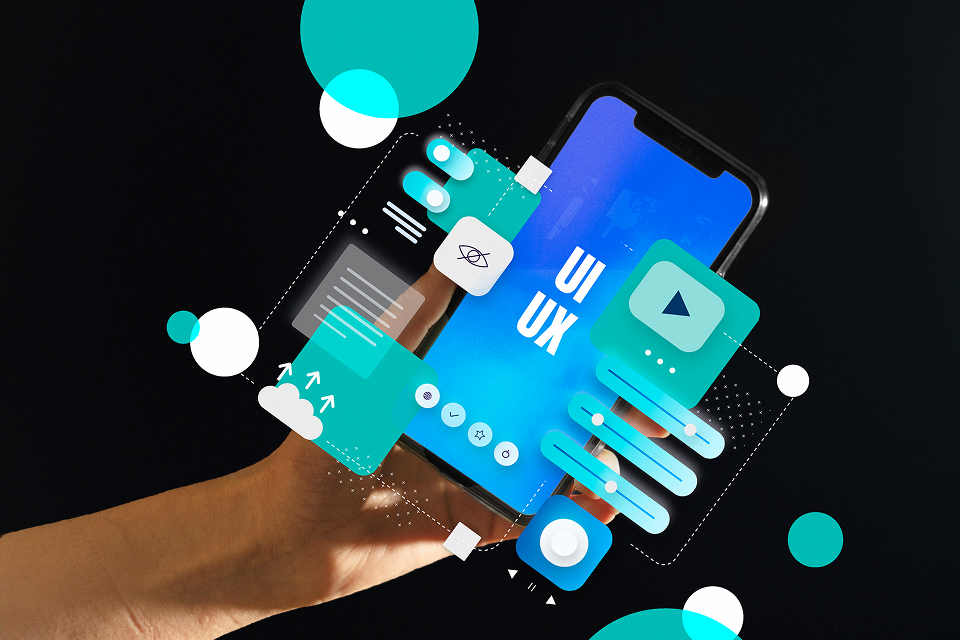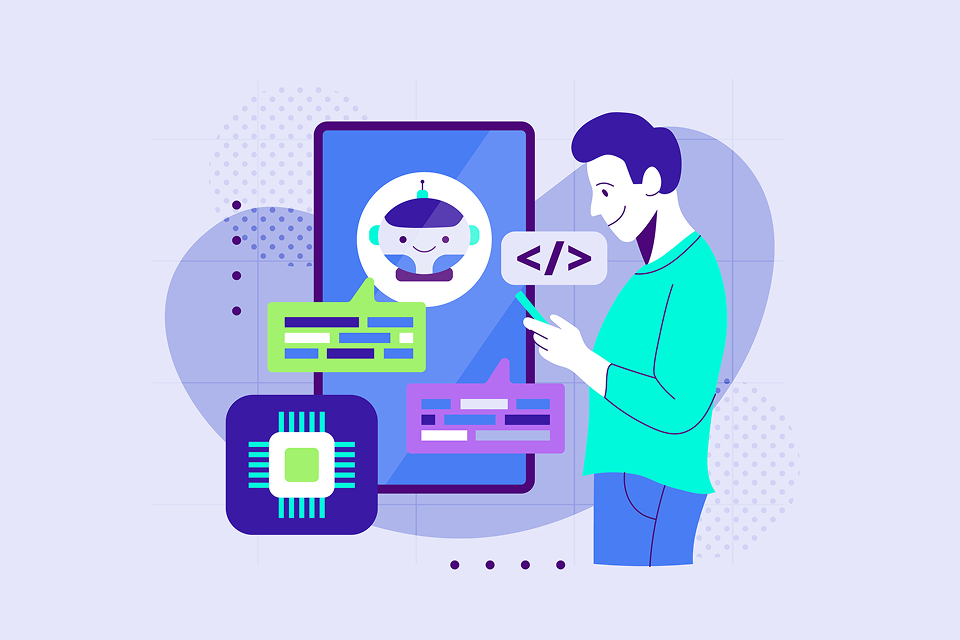Better goods, more efficient websites, and satisfied consumers can result from integrating artificial intelligence (AI) into your UX design. AI also helps you better understand user demands and optimize workflows.
But as AI becomes more widely used, teams are faced with a difficult problem: how can you strike a balance between the depth and accuracy of AI insights without sacrificing the individualized, human touch that makes UX design great?
We assess eight methods for integrating AI into your UX design process without sacrificing morality or caliber. We also discuss
- 24 AI-driven solutions that enhance various UX design process processes
- How AI could improve accessibility in design and lessen bias
- Real-world instances of how AI can improve customer satisfaction
8 AI-powered methods to enhance UX design
1. Examine a lot of user information
To comprehend current consumer behavior, UX designers no longer have to laboriously sort through voluminous user research. AI tools, on the other hand, swiftly examine vast amounts of data in order to identify patterns, decipher qualitative trends, and forecast user behavior in the future.
Artificial intelligence techniques to analyze vast amounts of user data
- Research AI: To influence design roadmaps and get stakeholder support, find new patterns and trends in customer behavior.
- Hotjar AI: Identify important discoveries and provide practical suggestions by using automated summary reports to evaluate vast amounts of open-ended user survey replies.
- DataRobot: Create and evaluate new designs based on historical data and predictive analytics that foresee user preferences and behavior.
2. Optimize testing and design prototyping
A crucial stage in maximizing UX functionality is design prototype and testing. Advanced user interaction simulations provided by AI are further changing this process and producing prototypes that more accurately mimic the behavior and preferences of real-world users.
Tools for AI-powered UX design testing and prototyping
- Uizard: Create working prototypes from sketches using machine learning based on user behavior and current design trends.
- Fronty: Generate HTML and CSS code from any image to create interactive webpages from static mockups.
- Mockitt AI: Utilizing predictive analytics, forecast user behavior and provide appropriate wireframes and prototypes.

3. Optimize product copy and user experience
More than simply a working website is necessary for effective UX design; excellent copy is also needed to help users navigate the customer journey. Artificial intelligence (AI) tools improve UX copy, especially for teams without dedicated UX writing resources. They do this by providing word choices that match user persona data and behavior patterns, as well as clear instructions and useful information that improves your customers’ entire product experience.
AI methods for improving product copy and user experience
- Unbounce Smart Copy: Create compelling, conversion-oriented landing page content using generative AI based on user preferences and demographics.
- Copy.ai: Create product descriptions, error messages, and call-to-action buttons by utilizing natural language processing.
- Contexta: Guarantee copy consistency across all UX designs by using an AI-powered copy library and word recommendations based on content rules.
4. Improve accessibility in design
A frequently disregarded aspect of UX design is making sure your service or product is accessible to individuals with impairments. Utilizing AI and UX design to enhance product accessibility-voice recognition, text resizing, color correction, alternate picture text-not only shows brand ethics and empathy, but it also gives your customers a sense of value and understanding.
Utilizing AI to enhance design accessibility
- Khroma: Develop color schemes that are accessible to those with visual impairments and improve reading.
- AccessiBe: Create a more smooth and inclusive experience by optimizing your UX design for keyboard navigation and screen-reader compatibility.
- UserWay: Ensure that your design complies with WCAG 2.1 AA requirements by using a coding assistance with digital accessibility training.
Check this out: Advantages of Using Independent UX Designers for Your Project
5. Personalize the user experience
Customization and reactivity If your product or service serves a broad audience with different needs, UX design-such as flexible user interfaces (UIs) and customized content delivery-is essential for retaining current customers and attracting new ones.
Customizing the user journey with AI tools
- Algolia: Develop a fluid and responsive flow by instantly modifying content displays and search results according on user inputs.
- Dynamic Yield: Automatically reorganize your buttons, menu elements, and grid to provide unique layouts according on the preferences of each visitor.
- Pendo AI: Adapt in-app help and onboarding to the appropriate users at the appropriate moment using Pendo’s machine learning algorithms
6. Minimize prejudice in design
Intentional or inadvertent, bias in UX design can greatly distort a product’s usability and appeal while also feeding prejudices. For instance, design features may unintentionally privilege some groups over others, resulting in a product that serves some purposes but excludes others.
AI technologies to reduce bias in user experience design
- Google Fairness Indicator: Identify any biases in the machine learning algorithms employed in UX design towards certain user groups.
- MonkeyLearn: Use sentiment analysis technologies to find hidden prejudices or stereotypes in UX copy or picture selections.
- Acrolinx: Use a content governance tool driven by AI to ensure that the language, design, and content are inclusive and free of bias.

7. Improve user interface design
Your product or service’s user interface (UI) and user experience (UX) design are closely related. UX design combines visual appeal with useful functionality to consistently excite and satisfy your customers.
UI design-enhancing AI tools
- Adobe Sensei: Using predictive analytics, select from a large collection of icons, logos, and typefaces that capture the distinct aesthetic and standards of your company.
- Fontjoy: Use deep learning artificial intelligence to create visually appealing and brand-consistent font combinations.
- Colormind: Examine user information and preferences to select color schemes that will immediately appeal to your target market and boost user interaction.
8. Streamline team output and efficiency
AI is being used by more and more UX design teams to automate time-consuming processes and optimize workflows, which will increase creativity, productivity, and teamwork.
UX team productivity and efficiency can be increased with AI tools.
- FigJam AI: Automate monotonous chores like creating boards, organize and brainstorm ideas, and create design templates automatically with Figma’s AI tool.
- Brainpool AI: Resize graphics according to screen scale or automatically create wireframes based on user data to minimize manual labor.
- Synthesia.io: Create a video in minutes using text, storyboards, and scripts; it offers more than 120 language, voice, and avatar template choices.
Conclusion
AI is reshaping UX design by offering smarter insights, faster workflows, and highly personalized user experiences. By embracing the eight strategies outlined, designers can streamline processes, reduce guesswork, and deliver more impactful designs. Now is the time to explore AI-driven tools and integrate them into your creative process. The future of UX is intelligent, efficient, and user-focused-don’t miss the opportunity to be part of it.
At InCreativeWeb, we blend creativity with data-driven insights to craft intuitive and engaging user experiences. Our UX design approach focuses on user behavior, accessibility, and seamless interaction across all devices. We integrate AI-powered tools to optimize workflows and personalize user journeys in real time. From wireframes to final prototypes, we ensure every design choice is user-centered. Let’s turn your digital experience into something users love and remember. Reach out today for smarter, AI-enhanced UX design solutions.
Author
Jayesh Patel
Jayesh Patel is a Professional Web Developer & Designer and the Founder of InCreativeWeb.
As a highly Creative Web/Graphic/UI Designer - Front End / PHP / WordPress / Shopify Developer, with 14+ years of experience, he also provide complete solution from SEO to Digital Marketing. The passion he has for his work, his dedication, and ability to make quick, decisive decisions set him apart from the rest.
His first priority is to create a website with Complete SEO + Speed Up + WordPress Security Code of standards.